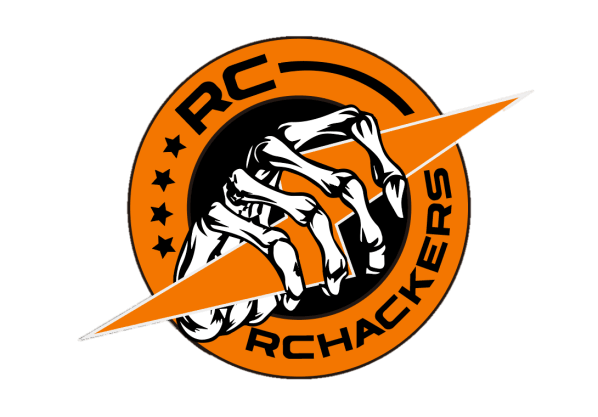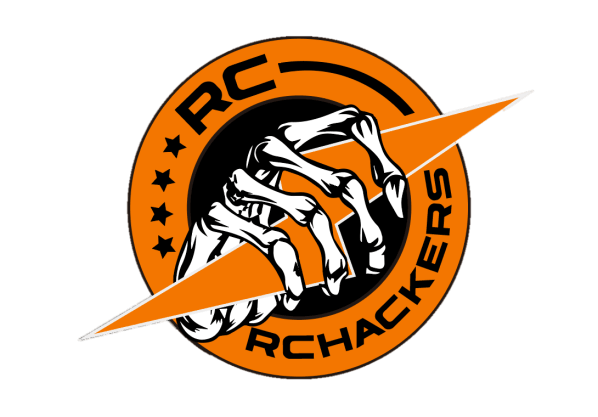Battery Guide
This guide aims at educating hobbyists new and old about LiPo batteries with a focus on safety.
Introduction:
Lithium Polymer (AKA “LiPo”) batteries are a type of battery now used in many consumer electronics devices. They have been gaining in popularity in the radio control industry over the last few years and are now the most popular choice for anyone looking for long run times and high power.
Introduction of the advantages and disadvantages of Lipo Batteries:
1) Pros:
Much lighter weight, and can be made in almost any size or shape.
Much higher capacities, allowing them to hold much more energy.
Much higher discharge rates, meaning they pack more punch.
2) Cons:
Much shorter lifespan; LiPos average only 150–250 cycles.
The sensitive chemistry can lead to a fire if the battery gets punctured.
Need special care for charging, discharging, and storage.
Lipo Battery:
Lithium Polymer or Lipo batteries are the standard rechargeable battery type used in today's RC products. LiPo's have significant benefits over Nickel-metal Hydride (NiMH) or Nickel-cadmium (NiCd) including lighter weight, increased run time, and higher number of charge cycles. The nominal voltage of each LiPo cell is 3.7V. Here are the nominal voltages of the most popular size LiPo batteries:
LiPo Nominal Voltage (Resting)
1 Cell (1S) 3.7V
2 Cell (2S) 7.4V
3 Cell (3S) 11.1V
4 Cell (4S) 14.8V
6 Cell (6S) 22.2V
While the nominal voltage is the standard voltage labeling on most LiPo batteries, the maximum voltage of LiPo batteries is an important data point which shows you when you batteries are fully charged. Your battery charger will typically cutoff it's charge cycle when it reaches the maximum voltage of each LiPo cell; 4.2V per cell. Here are the maximum voltages of LiPo RC batteries:
LiPo Maximum Voltage (Fully Charged)
1 Cell (1S) 4.2V
2 Cell (2S) 8.4V
3 Cell (3S) 14.8V
4 Cell (4S) 16.8V
6 Cell (6S) 25.2V
C Rating - Discharge Rate
Discharge rate is simply how fast a battery can be discharged safely. In the RC LiPo battery world it is called the “C” rating. A battery with a discharge rating of 10C would mean you could safely discharge it at a rate 10 times more than the capacity of the pack, a 15C pack = 15 times more, a 20C pack = 20 times more, and so on.
Let's use a 1000 mAh battery as an example; if it was rated at 10C that would mean you could pull a maximum sustained load up to 10,000 milliamps or 10 amps off that battery (10 x 1000 milliamps = 10,000 milliamps or 10 amps). From a time stand point, this equals 166 mAh of draw a minute so the 1000 mAh pack would be exhausted in about 6 minutes.
Most RC LiPo Battery packs will show the continuous C rating and some are now indicating a burst rating as well. A burst rating indicates the battery discharge rate for short bursts of extended power. The higher the C rating, usually the more expensive the battery. This is where you can save some money. Getting an extremely high discharge rated pack when there is no way you could possibly pull the full amount of power is not required. The most important thing is you can't go with too low a discharge C rating or you will damage your battery and possibly your ESC (electronic speed control). As a very general guide line, 25C to 30C discharge rated packs are the norm for most RC aircraft.
Voltages
Each cell in your LiPo battery has a nominal voltage of 3.6V. However when you use the battery the voltage will drop down, but it is important not to let this minimum voltage drop below 3.0V. Similarly you must ensure that the maximum voltage for a lipo cell is 4.2V. If the voltage of any cell in your Lipo battery goes beyond this range you can cause the chemicals to become unstable which can cause a fire :fire: so for this reason Lipo battery chargers are designed to ensure you only charge each cell to 4.2V. Similarly most ESC’s have a cut off voltage which turns off the motor when the voltage of your battery gets low to avoid discharging it too much.
Capacity
The capacity of a battery is a representation of how long it can provide energy for, often quoted in mili Amp hours, (mAH). The bigger this number, the more capacity the battery has, so it can run your motors for longer. However the higher the capacity of a battery, the heavier it is so there is always a trade off between the battery capacity and weight for your aircraft.
How to Charge a LiPo Battery Safely
When it comes to charging your LiPo battery is very important to never leave a LiPo to charge unsupervised, I have read a few too many stories of fires :fire: starting because someone did not monitor their batteries while they where charging. Most of the time fires start because inferior b-grade LiPo batteries are used. If you use premium brand Lipo batteries such as RCHackers you will not need to worry as they have all undergone rigorous safety tests and have the certifications to prove it. Here I will discuss a few rules you must follow while charging your batteries.
Introduction:
Lithium Polymer (AKA “LiPo”) batteries are a type of battery now used in many consumer electronics devices. They have been gaining in popularity in the radio control industry over the last few years and are now the most popular choice for anyone looking for long run times and high power.
Introduction of the advantages and disadvantages of Lipo Batteries:
1) Pros:
Much lighter weight, and can be made in almost any size or shape.
Much higher capacities, allowing them to hold much more energy.
Much higher discharge rates, meaning they pack more punch.
2) Cons:
Much shorter lifespan; LiPos average only 150–250 cycles.
The sensitive chemistry can lead to a fire if the battery gets punctured.
Need special care for charging, discharging, and storage.
Lipo Battery:
Lithium Polymer or Lipo batteries are the standard rechargeable battery type used in today's RC products. LiPo's have significant benefits over Nickel-metal Hydride (NiMH) or Nickel-cadmium (NiCd) including lighter weight, increased run time, and higher number of charge cycles. The nominal voltage of each LiPo cell is 3.7V. Here are the nominal voltages of the most popular size LiPo batteries:
LiPo Nominal Voltage (Resting)
1 Cell (1S) 3.7V
2 Cell (2S) 7.4V
3 Cell (3S) 11.1V
4 Cell (4S) 14.8V
6 Cell (6S) 22.2V
While the nominal voltage is the standard voltage labeling on most LiPo batteries, the maximum voltage of LiPo batteries is an important data point which shows you when you batteries are fully charged. Your battery charger will typically cutoff it's charge cycle when it reaches the maximum voltage of each LiPo cell; 4.2V per cell. Here are the maximum voltages of LiPo RC batteries:
LiPo Maximum Voltage (Fully Charged)
1 Cell (1S) 4.2V
2 Cell (2S) 8.4V
3 Cell (3S) 14.8V
4 Cell (4S) 16.8V
6 Cell (6S) 25.2V
C Rating - Discharge Rate
Discharge rate is simply how fast a battery can be discharged safely. In the RC LiPo battery world it is called the “C” rating. A battery with a discharge rating of 10C would mean you could safely discharge it at a rate 10 times more than the capacity of the pack, a 15C pack = 15 times more, a 20C pack = 20 times more, and so on.
Let's use a 1000 mAh battery as an example; if it was rated at 10C that would mean you could pull a maximum sustained load up to 10,000 milliamps or 10 amps off that battery (10 x 1000 milliamps = 10,000 milliamps or 10 amps). From a time stand point, this equals 166 mAh of draw a minute so the 1000 mAh pack would be exhausted in about 6 minutes.
Most RC LiPo Battery packs will show the continuous C rating and some are now indicating a burst rating as well. A burst rating indicates the battery discharge rate for short bursts of extended power. The higher the C rating, usually the more expensive the battery. This is where you can save some money. Getting an extremely high discharge rated pack when there is no way you could possibly pull the full amount of power is not required. The most important thing is you can't go with too low a discharge C rating or you will damage your battery and possibly your ESC (electronic speed control). As a very general guide line, 25C to 30C discharge rated packs are the norm for most RC aircraft.
Voltages
Each cell in your LiPo battery has a nominal voltage of 3.6V. However when you use the battery the voltage will drop down, but it is important not to let this minimum voltage drop below 3.0V. Similarly you must ensure that the maximum voltage for a lipo cell is 4.2V. If the voltage of any cell in your Lipo battery goes beyond this range you can cause the chemicals to become unstable which can cause a fire :fire: so for this reason Lipo battery chargers are designed to ensure you only charge each cell to 4.2V. Similarly most ESC’s have a cut off voltage which turns off the motor when the voltage of your battery gets low to avoid discharging it too much.
Capacity
The capacity of a battery is a representation of how long it can provide energy for, often quoted in mili Amp hours, (mAH). The bigger this number, the more capacity the battery has, so it can run your motors for longer. However the higher the capacity of a battery, the heavier it is so there is always a trade off between the battery capacity and weight for your aircraft.
How to Charge a LiPo Battery Safely
When it comes to charging your LiPo battery is very important to never leave a LiPo to charge unsupervised, I have read a few too many stories of fires :fire: starting because someone did not monitor their batteries while they where charging. Most of the time fires start because inferior b-grade LiPo batteries are used. If you use premium brand Lipo batteries such as RCHackers you will not need to worry as they have all undergone rigorous safety tests and have the certifications to prove it. Here I will discuss a few rules you must follow while charging your batteries.

